Yesterday morning this Western Meadowlark surprised me and gave me an intimate glimpse into its world.
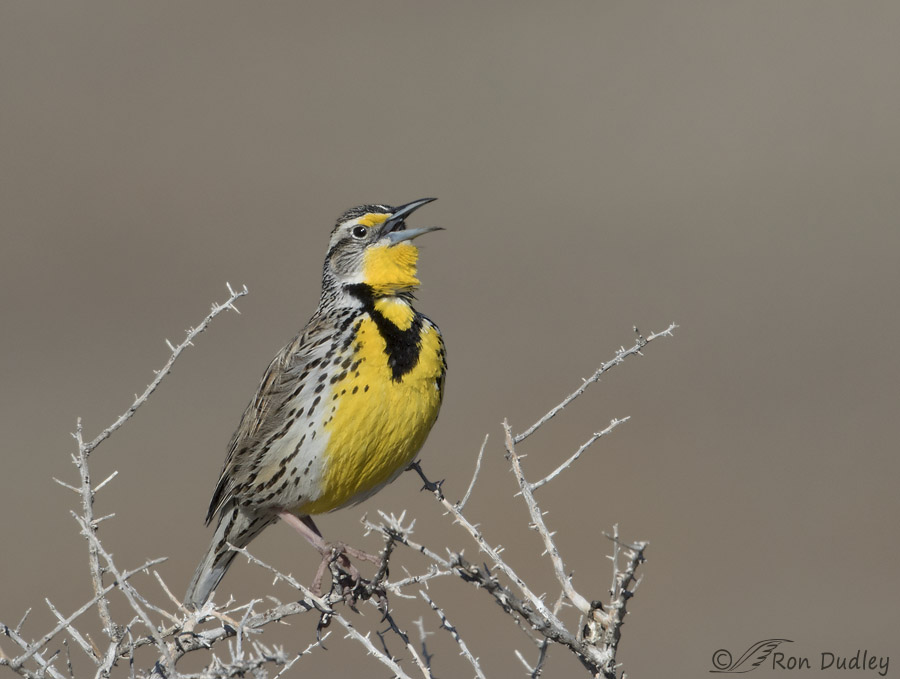
1/4000, f/6.3, ISO 500, Canon 7D Mark II, Canon EF500mm f/4L IS II USM +1.4 tc, not baited, set up or called in
When I first began my session with the bird it was singing from a perch on Antelope Island. It was a little too far away for images of the best quality but typical of me I fired away anyway and hoped for a good angle at take-off.
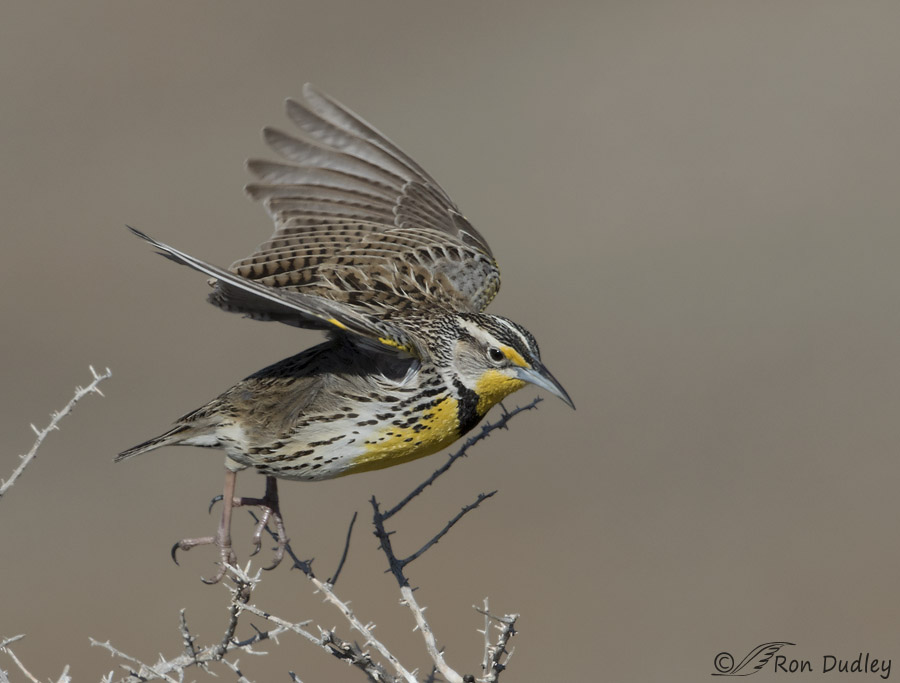
1/3200, f/7.1, ISO 500, Canon 7D Mark II, Canon EF500mm f/4L IS II USM +1.4 tc, not baited, set up or called in
When it did I expected it to launch slightly upward but it fooled me and …
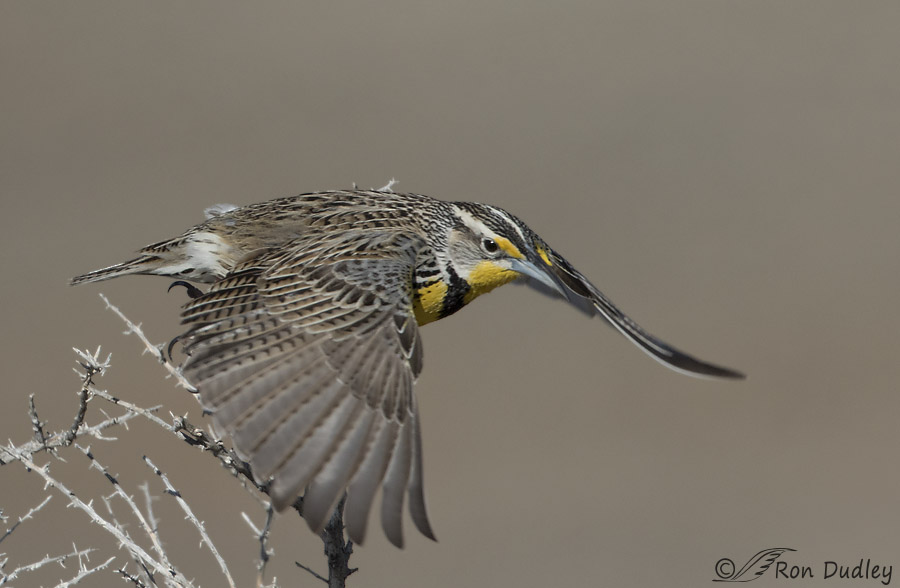
1/3200, f/7.1, ISO 500, Canon 7D Mark II, Canon EF500mm f/4L IS II USM +1.4 tc, not baited, set up or called in
dropped down at a steep angle to the base of the bush so I had very little room at the bottom of the frame.
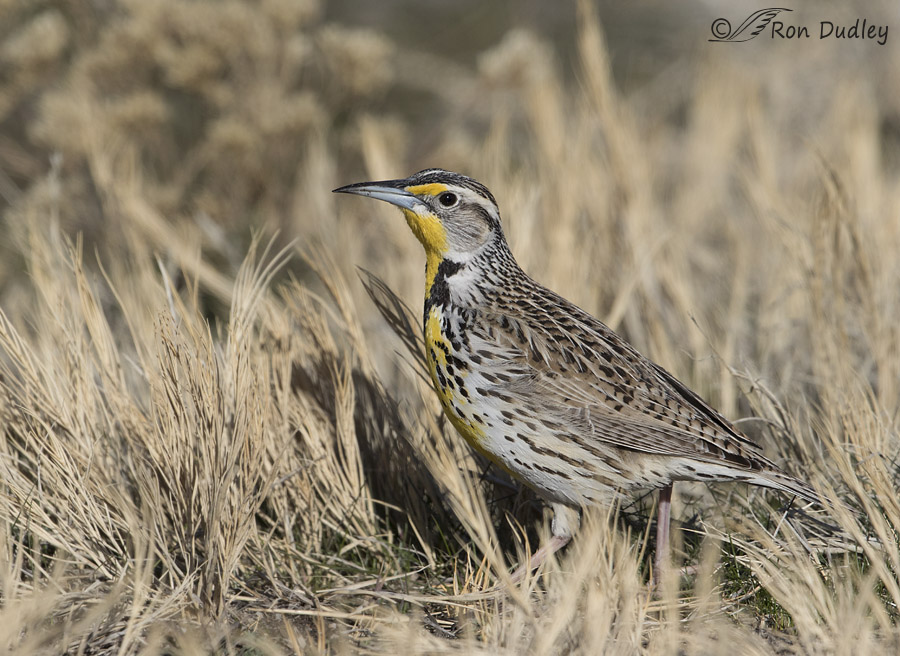
1/3200, f/7.1, ISO 500, Canon 7D Mark II, Canon EF500mm f/4L IS II USM +1.4 tc, not baited, set up or called in
The bird spent the next 12 minutes foraging for insects in the ground very close to me in my pickup and in that time I fired off 324 shots. Much of the time it was buried in the grass but I did get a few fairly clear images, including some of an interesting behavior.
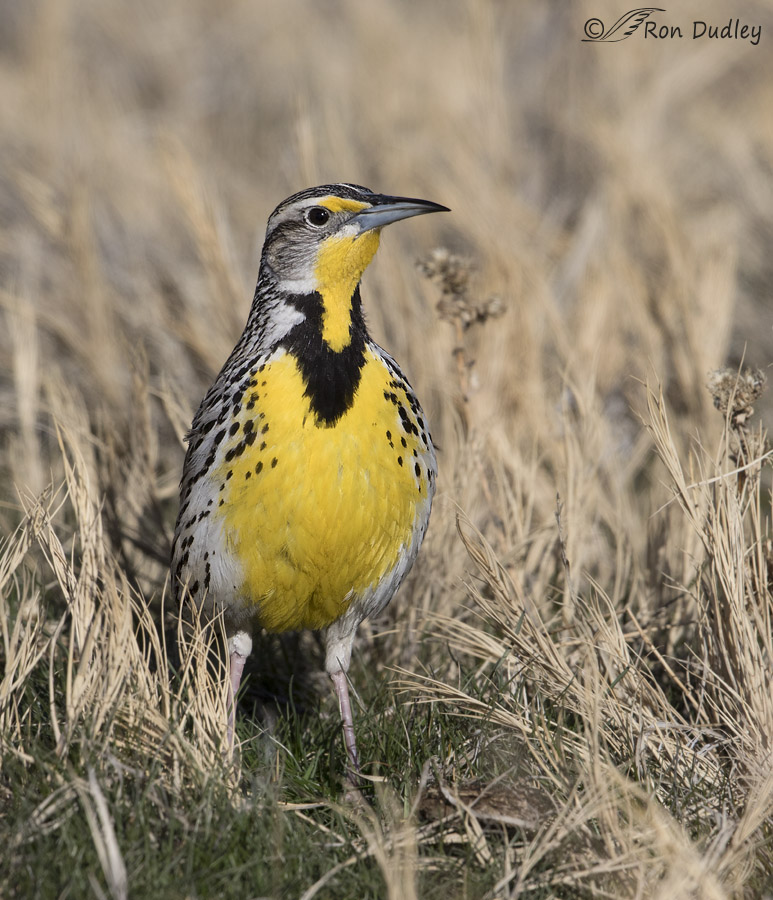
1/3200, f/7.1, ISO 500, Canon 7D Mark II, Canon EF500mm f/4L IS II USM +1.4 tc, not baited, set up or called in
The bird checked me out a couple of times and after that it simply ignored me as it probed for insects in the ground. At this point the meadowlark came in so close…
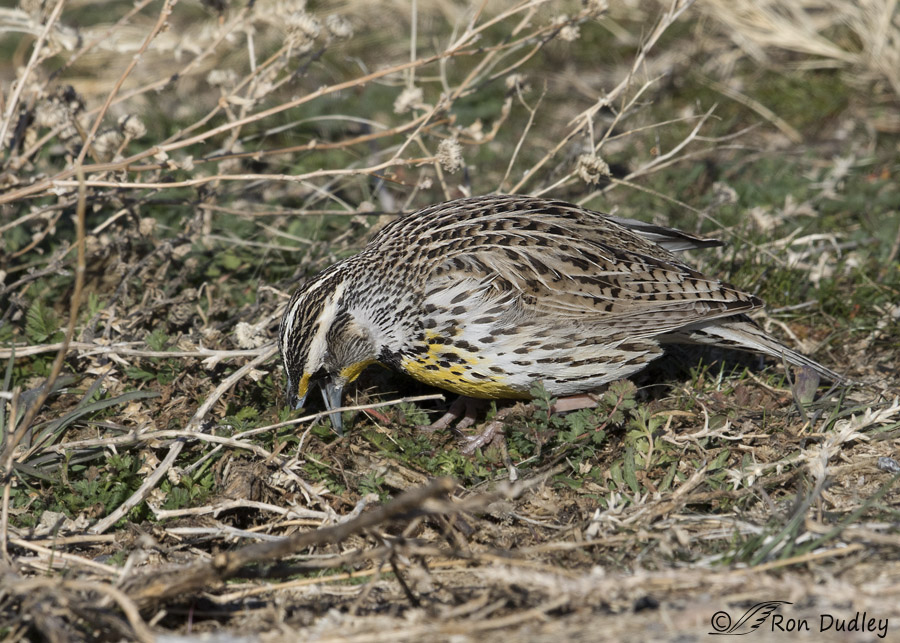
1/2500, f/7.1, ISO 500, Canon 7D Mark II, Canon EF500mm f/4L IS II USM, not baited, set up or called in
that I had to remove my teleconverter.
Meadowlarks (and some blackbird species) often use an interesting and fairly unique feeding technique when probing the ground for food. In this process, known as gaping, they plunge their closed, long and sharp awl-like bill into the ground (or beneath an object) and then the mandibles are spread apart widely to give them better access to food. I’d known about the behavior previously but these are the best and most detailed photos I’ve ever been able to get of it.
When meadowlarks are observed in the field their bills are often coated with mud. Here the reason for that becomes obvious.
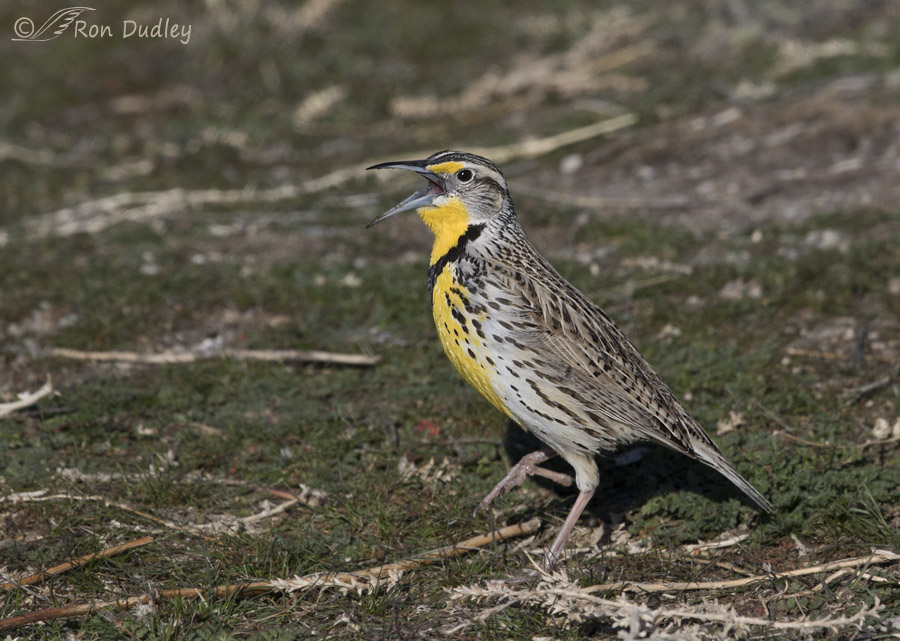
1/2000, f/7.1, ISO 500, Canon 7D Mark II, Canon EF500mm f/4L IS II USM, not baited, set up or called in
Meadowlarks are inveterate singers and though this bird was in frenzied feeding mode it just couldn’t resist singing a couple of times as it moved about looking for a meal.
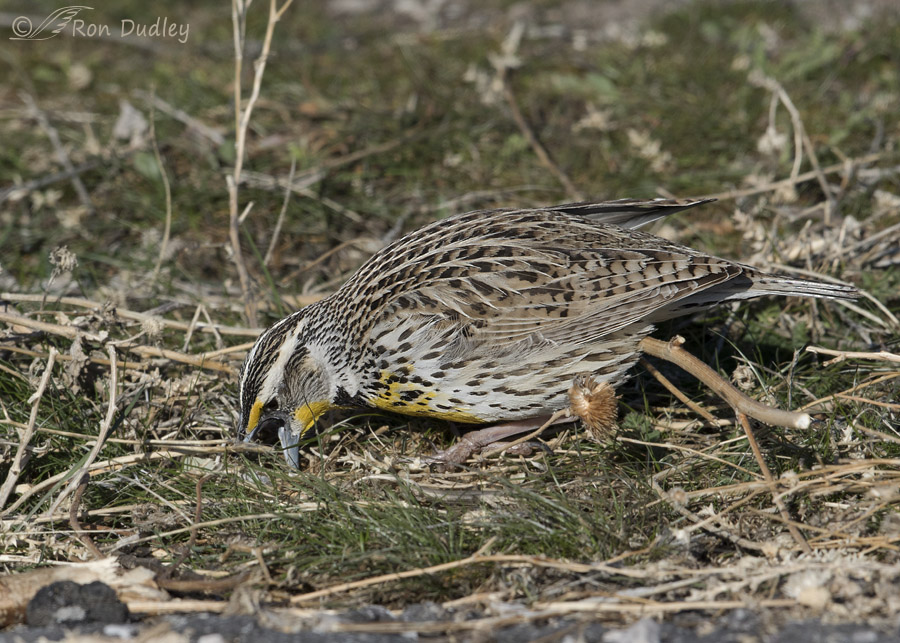
1/2000, f/7.1, ISO 500, Canon 7D Mark II, Canon EF500mm f/4L IS II USM, not baited, set up or called in
I was able to get several images that clearly showed the gaping behavior and at times the mandibles in the ground were spread even wider than you see here. At one point this meadowlark caught a small worm but I was adjusting my camera settings so I missed it.
Meadowlarks are usually quite skittish while feeding so I was delighted to get an intimate look at this behavior.
Ron


Great series of a dedicated singer….I always think of them as singing their hearts out…interesting to see them doing something else….like eating!
I don’t mind leaving west coast, but whenever I see the photos of western meadowlark, I miss their song. I have lots of singing birds in east coast, but I sometime really want to hear this beautiful song. Not in Youtube, in real life. Anyway, thank you very much Ron for this beautiful series of this lovely bird.
I have sent links of your blog to my father, and he is saying a big thank you!!!He loves bird and animal kingdom, he is delighted to see your informative writing. I hope he will find out how to subscribe and be able to get the joy of reading your blog everyday.
Have a nice weekend Ron!
Hi Ron – An absolutely gorgeous series. I’ve never seen a meadowlark and have loved all these close looks at them. I also laughed at something you said in your blog. You took 324 photos in a period of 12 minutes & it brought back memories of having to load & unload film & I always had to take my film to be developed. When digital cameras 1st came out, I wondered what their impact would be on photography. I think it’s been positive for both amateur & professional photographers. What is also interesting is the impact that smartphone cameras are having on the camera market. I don’t have or want a smartphone. A couple of weeks ago met family visiting me at Vero Beach, FL & I used there phone to “try” to take photos outside at the beach & couldn’t see ANYTIHNG on the screen. I’ll stick w/my Nikon D80 so I have control!! Now I’ll get off my soapbox!!
These shots are simply incredible! Thanks so much for sharing!
Charlotte
Colorful & melodic in beauty, to the point I can hear’s it’s melody! Beautiful captures Ron!
Great series! It would be really wonderful to be able to get that close to a bird and really see these behaviors.
It was, Susan. It certainly was!
Amazing. What a privilege to see.
Megathanks.
Glad you enjoyed the images, EC. Thank you.
Beautiful shots! I’ve never seen that behavior before in meadowlarks.
Thanks very much, Scott.
What a terrific sequence..beautiful shots! I love Meadowlarks too and I now understand their behavior a little better. The launch was terrific..almost as good as the one you posted a couple weeks ago. Jer
Thanks, Jerry. I keep working at take-off shots but I’m not successful very often…
Great shots, Ron. These are the best photos of this behavior that I have ever seen. In most birds, the muscles that close the beak are stronger than those that open the beak. Just the opposite is true in these birds allowing them to open a hole in the ground to get insects and other invertebrates unavailable to other birds. Orioles (also in the New World Blackbird Family) somtimes probe a hole into fruit and spread the beak to reach the juicy interior. By the way, starlings have the same ability and probe into lawns to get cranefly larvae (also a European species) that are out of reach to most of our native birds. Thanks for sharing these photos.
Very interesting info you’ve provided, Dan! Makes me think that we can almost predict which birds practice the behavior by checking out the shape of their beaks because many of the ones mentioned seem to have similar shapes – relatively long and pointed (awl-like).
Terrific series. I rarely get looks of Meadowlarks on the ground so I haven’t seen this interesting behavior. Will be on the outlook for it now.
I don’t see it often either, Dave – mostly because they seldom feed while I’m close and when they do they’re usually buried in vegetation.
I wonder if it is a hunting technique to drive what’s between the stabbing points of the beak up. Or to detect movement. Sort of like a cat who pounces to see if the mouse will run.
I’m not sure, Arwen. It must work though…
This is a very interesting post! Besides the excellent pictures, I wonder whether Meadowlarks, or for that matter any bird that searches for food in soil or the ground, has sensory neurons in their bill, much like shorebirds do that probe shallow or deep into sand for invertebrates. I keep saying Ron, you are collecting a library of very important behavioral photographs, that could be published!
Many thanks!
Good question, Dick and I don’t know the answer. Makes sense though…
Ron, I envy your hearing their song. But I can almost hear them when I see your photos. Thank you
I never tire of hearing them, Diana, and I hear them a lot.
Very very interesting. I never saw a bird with such behavior.
At first I thought it was throwing up something.
Great series.
I am curious to know what kind of settings you were trying to change. Would you mind sharing?
Thanks.
Jorge, The bird was in thick grass at the time so I was switching to a single micro focusing point to make it easier to focus on the head with all that grass around. While I was doing so (it only takes a second) I missed the shot of the worm before it went down the hatch.